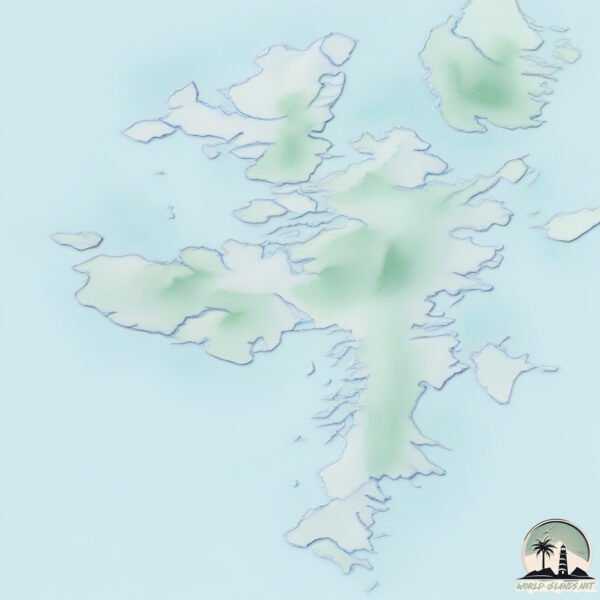Shetland Mainland

Welcome to Shetland Mainland, a Temperate island in the North Atlantic Ocean, part of the majestic Atlantic Ocean. This guide offers a comprehensive overview of what makes Shetland Mainland unique – from its geography and climate to its population, infrastructure, and beyond. Dive into the details:
- Geography and Size: Explore the island’s size and location.
- Climate and Weather: Weather patterns and temperature.
- Topography and Nature: Uncover the natural wonders of the island.
- Infrastructure and Travelling: Insights on reaching, staying, and making the most of your visit.
- News and Headlines: Latest News.
Geography and size of Shetland Mainland
Size: 982.6 km²
Coastline: 848.4 km
Ocean: Atlantic Ocean
Sea: North Atlantic Ocean
Continent: Europe
Shetland Mainland is a Large Island spanning 983 km² with a coastline of 848 km.
Archipel: Shetland Islands – Located northeast of mainland Scotland, these islands are known for their rugged terrain, unique cultural heritage, and abundant birdlife.
Tectonic Plate: Eurasia – One of the world’s largest tectonic plates, the Eurasian Plate covers a significant portion of Europe and Asia. It’s characterized by diverse geological features, including the Ural Mountains, the European Plain, and the Himalayas formed from its collision with the Indian Plate.
The geographic heart of the island is pinpointed at these coordinates:
Latitude: 60.29694391 / Longitude: -1.34690296
Climate and weather of Shetland Mainland
Climate Zone: Temperate
Climate Details: Temperate Oceanic Climate
Temperature: Warm Summer
Climate Characteristics: Known for its moderate year-round temperatures with ample rainfall and no dry season. Warm summers are characteristic.
Topography and nature of Shetland Mainland
Timezone: UTC±00:00
Timezone places: Europe/London
Max. Elevation: 475 m
Mean Elevation: 119 m
Vegetation: Herbaceous Cover
Tree Coverage: 42%
The mean elevation is 119 m. The highest elevation on the island reaches approximately 475 meters above sea level. The island is characterized by Hills: Gently sloping landforms with rounded tops, having a maximum elevation between 200 and 500 meters. Hills contribute to a varied landscape on islands.
Dominating Vegetation: Herbaceous Cover
Comprising mainly of grasses, herbs, and ferns, these areas are common in prairies, meadows, and savannas, and can vary widely in species composition. Shetland Mainland has a tree cover of 42 %.
Vegetation: 14 vegetation zones – Exceptionally Diverse Island
Islands with more than ten vegetation zones are among the most ecologically rich and varied in the world. These islands are akin to miniature continents, boasting an incredible array of ecosystems. The sheer range of habitats, from high peaks to deep valleys, rainforests to deserts, creates a mosaic of life that is unparalleled. They are crucial for conservation and ecological studies.
Infrastructure and Travelling to Shetland Mainland
Does the island have a public airport? yes.
Shetland Mainland has a public and scheduled airport. The following airports are located on this island: Lerwick / Tingwall Airport, Sumburgh Airport.
Does the island have a major port? yes.
Shetland Mainland is home to a major port. The following ports are situated on the island: SULLOM VOE.
The mean population of Shetland Mainland is 21 per km². Shetland Mainland is Gently Populated. The island belongs to United Kingdom.
Continuing your journey, East Burra Island is the next notable island, situated merely km away.
The Shetland Islands - Is this the most beautiful part of UK?



United Kingdom is classified as Developed region: G7: Group of Seven – Major advanced economies, including Canada, France, Germany, Italy, Japan, the United Kingdom, and the United States. The level of income is High income: OECD.
News – Latest Updates and Headlines from Shetland Mainland
Stay informed with the most recent news and important headlines from Shetland Mainland. Here’s a roundup of the latest developments.
Please note: The data used here has been primarily extracted from satellite readings. Deviations from exact values may occur, particularly regarding the height of elevations and population density. Land area and coastline measurements refer to average values at mean high tide.
